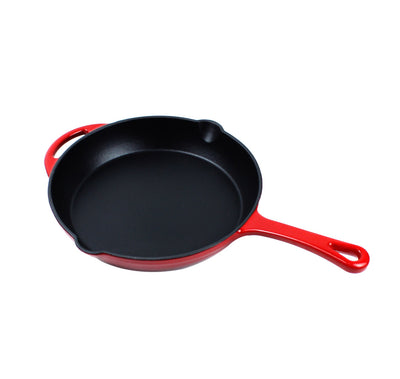Cast iron pots and pans have made a major comeback in recent years, for good reason. When cared for properly, cast iron cookware can last for generations. Cast iron provides superior heat retention and distribution, ideal for searing, frying, braising, and more. The natural non-stick properties also make cast iron a breeze to cook with.
However, cast iron requires special maintenance to keep it in peak cooking condition. If youÕve recently added cast iron cookware to your kitchen, follow these essential tips to clean, season, and care for it. With the right techniques, your cast iron pot or pan will provide a lifetime of delicious meals.

Proper Seasoning is Key
Seasoning is coating a cast iron pizza pan with a thin layer of oil and slowly heating it to turn the oil into a natural, non-stick finish. The seasoning on a new cast iron pot needs to be built up over time. Even very old, heavily seasoned cast iron benefits from occasional re-seasoning.
Make sure to season your cookware 2-3 times when new, and re-season occasionally to restore the finish. You can season in the oven or on the stovetop. Use a high smoke point oil like vegetable, canola, or avocado oil. Thinly coat the entire surface, inside and out. Heat slowly and evenly until the oil turns dark and develops a sheen.

Know When to Scrub
While soap and water are big no-nos for cast iron, you can and should wash with hot water, a stiff brush, and a paste of coarse salt and oil. This scrubbing cleans without stripping away seasoning. Do this after cooking especially messy foods.
For stuck-on bits, boil water in the pot for 5 minutes to loosen debris, then scrub. For burnt food residue, sprinkle with salt and scrub with a potato half. The salt acts as an abrasive and the potato helps scrub without hurting the seasoning.
Store and Handle With Care
Avoid banging cast iron cookware around, which can cause the seasoning to crack or chip. Always hand wash gently with a soft sponge or brush. Lift and move cast iron carefully.
When storing, avoid stacking cast iron or nesting pots inside one another. This could lead to scratching. Once dry, rub the item with a light oil coating before storing to maintain the seasoning.
If your cast iron develops rust spots from improper drying or humidity, scrub the rust away immediately and re-season. This prevents permanent damage.
Restore Seasoning Regularly
No matter how carefully you care for your cast iron dutch oven or other cookware, the seasoning will slowly degrade. Restore and strengthen your seasoning every few months to keep cast iron in top cooking condition.
Scrub away any debris per above instructions, then coat in a fresh layer of oil and re-season in the oven on a low 300¡F for an hour or so, rotating occasionally. This revitalizes the non-stick patina. Repeat anytime the seasoning looks worn or spotty.
Conclusion
With the right care and maintenance, your investment in long-lasting cast iron cookware will pay off for years. Always properly season, gently hand wash, dry thoroughly, and avoid cooking overly acidic or sugary foods. With these essential tips, you can pass your cast iron pots and pans down to the next generation of home cooks.
For high-quality cast iron cookware that will become family heirlooms, browse the selection atTheir American-made pots, pans, and accessories are designed to last a lifetime.